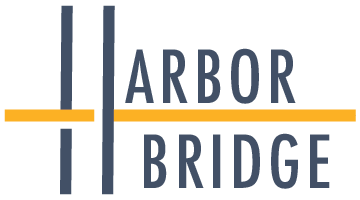Setting Expectations as a Leader: The Skill that Builds Trust, Productivity and Success
Looking back on my career, a few missteps still stand out—moments I can’t quite shake. The frustrating part? Many of them could’ve been avoided with just a bit more clarity in communication.
One simple word in particular comes to mind: “soon.”
In one office where I worked, “soon” meant something different to everyone—sometimes “by the end of the day,” other times “sometime next week,” or somewhere in between. Without clarification, deadlines were missed, performance lagged, frustration grew, trust eroded, and morale plummeted. It was no surprise that the team struggled to meet its goals.
Sound familiar? Scenarios like this are all too common, and they often stem from a simple but profound problem: unclear expectations.
WHY LEADERS STRUGGLE WITH EXPECTATIONS
If setting explicit expectations is so powerful, why don’t more leaders prioritize it? Often, it’s because of these common roadblocks:
Not carving out the time: With deadlines looming and priorities pulling you in every direction, it’s easy to skip over setting clear expectations.
Fear of micromanaging: Many leaders shy away from being explicit because they don’t want to come off as controlling. However, as Brené Brown wisely says, “Clear is kind.” When people know exactly what’s expected, they can confidently and autonomously get to work.
Lack of self-awareness: Before communicating expectations to others, we must first ask ourselves: Am I fully clear on what’s needed? Without clarity on your own goals, it’s nearly impossible to effectively communicate them to others.
Overestimating understanding: With skilled teams, it’s easy to think, “They should already know what’s expected—I don’t need to spell it out.” But leaving things unsaid often leads to differing interpretations, resulting in misalignment and frustration.
SETTING EXPLICIT EXPECTATIONS: THE THREE C’S
Recognizing these roadblocks is only the first step. The real transformation happens when leaders take intentional steps to set expectations clearly and effectively. At Harborbridge, we focus on three essential principles: Clarity, Context, and Commitment.
1. Start with Clarity
Before sharing an expectation, reflect on the specifics: What is the exact outcome I need? Who is responsible? When is it needed?
Example: Instead of saying, “I need the report soon,” try: “Please send me the finalized report by 3 PM Friday so I can review it before the client meeting.”
Why this matters: Specificity ensures alignment and reduces errors.
2. Provide Context
People are more motivated when they understand the “why” behind a task.
Example: “This report is critical for our client presentation on Monday. Having it by Friday gives us time to make adjustments.”
Why this matters: Context turns a task into a meaningful contribution.
3. Invite Questions and Commitment
Communication is a two-way street. After outlining expectations, ask: “What questions do you have?” “Does this timeline feel realistic?” Then secure buy-in: “Can I count on you to have this by Friday?”
Why this matters: Open dialogue builds accountability and ensures alignment.
HOW WE DO THIS AT HARBORBRIDGE
At Harborbridge, we believe setting explicit expectations is so fundamental, it is the first subject in our Leadership Foundations program. In addition to teaching the Three C’s—Clarity, Context, and Commitment—we go deeper to address the underlying dynamics that often complicate communication:
Implicit Expectations: Many leaders hold unspoken assumptions about what should be “obvious” or “common sense.” In our program, we guide leaders through identifying and unpacking these hidden expectations, helping them replace vague assumptions with actionable clarity. This exercise often leads to profound “a-ha” moments that improve alignment and reduce frustration within their teams.
The Expectation Circle Back: One of our most popular tools, this practical framework empowers leaders to reset expectations when something has been left unclear or has gone off track. It helps leaders address ongoing behaviors in a way that fosters trust, respect, and alignment without casting blame or causing defensiveness. Participants consistently share how this approach has improved communication, streamlined workflows, and strengthened relationships.
By combining these insights with practical tools, Harborbridge ensures leaders leave with strategies they can apply immediately to transform how their teams communicate and collaborate.
Take the Next Step
Great leadership starts with clear expectations. Ready to transform your team’s culture and performance? Enroll in Leadership Foundations today and see the difference.
For a limited time, we are offering 20% off Leadership Foundations as a New Year’s Special! Take advantage of this offer before it disappears!
